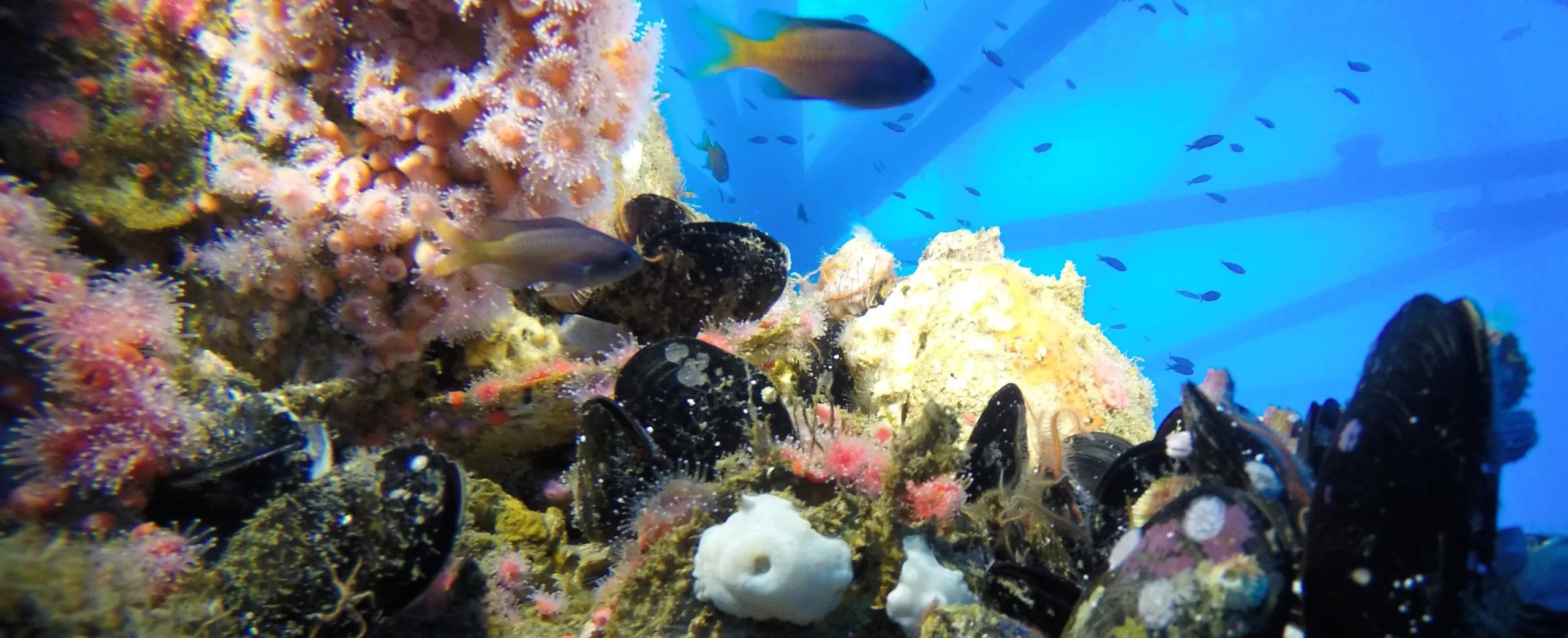
The Law of Unintended Consequences – Part 3
In the last 2 weeks, the Decommissioning blog posts discussed the Law of Unintended Consequences or LOUC for short. We also observed that:
- There is negativity to the oilfield among those unfamiliar with the industry.
- The attitude of some toward older offshore installations is:
- They are worn out, dirty, dangerous, and probably leak oil
- Yes, let’s remove them and clean the seafloor, the cleaner the better.
- While this could be considered a public relations problem, it is perhaps best considered a Public Education
- The LOUC for the decommissioning space is the fact that we are not always removing junk steel structures; we are rather removing what might be called “ocean aquariums” filled with a dazzling array of marine life.
- The result of this unintentional outcome for our facilities is that we need to consider a change in the way we decommission them.
We also made some potentially outlandish claims about the LOUC and that its effect on decommissioning could result in a “win-win-win” situation for the oilfield. In last week’s blog we revealed two out of three of these “wins,” and will now reveal Win Number Three.
The two “wins” described last week seem to be perfection for our beloved industry. Since we have now learned that our old facilities are in many cases ecological ‘hot spots’ full of fish, it is good for the planet and good for the Shareholders, too, if we simply do not remove them. Problem solved; game over.
Well, that statement is close to correct, but it does not tell the whole story. There are two problems with it:
- It makes the Operator happy, because he has saved millions of dollars in scope reductions. But the company has shareholders, and stakeholders, and the ”great unvarnished public” to contend with. Remember our Public Education problem? More on that in a minute.
- There are more stakeholders in this situation than company management and the fishes. Any decision on what to do with an offshore facility involves commercial fishermen, marine vessel passage and navigation, seafloor special interests such as reef preservation or sand resource conservation, groups such as Greenpeace, et al, all of whom have their concerns and competing interests.
Let’s take these points one by one. First, let’s go back and talk to that stereotypical Non-Oil Supporter from the first blog. Here might be his reaction to hearing the news that an Operator simply left a facility in place:
“Ok, let me get this straight. XYZ Oil has announced that their dirty, rusty, leaking, useless facility is going to be left in place. And how much money is this going to save them? And my fill-up this morning was $55 by the way. Isn’t it real convenient that the “best way” to clean up our planet is to Not Clean It Up? This seems fishy to me.” (sorry, pun intended)
The point of this imaginary conversation is that people unfamiliar with the science behind these decisions are going to require proof of the sufficiency of the process and education in the process, which must be objective and transparent. The proof must be rock-solid, because skepticism needs to be overcome in many instances.
Regarding the second problem, differing interests and differing viewpoints generate controversy. What is right for one group can likely be wrong for another. A decommissioning decision can sometimes be described as choosing the best of a bad set of alternatives. This can easily be true from the perspective one or more of these outside groups. All of these stakeholders need effective communication during the process of decision making. All of them need proof that a decision, perceived as not in their interest, is somehow ‘best’ overall.
That third “win” is looking mighty elusive right about now, isn’t it? How can we as an industry satisfy these diverse needs, using rock-solid objective science, and effectively communicate with a sometimes-skeptical public that we are indeed doing the right thing?
Law of Unintended Consequences and Net Environmental Benefits Analysis
One promising answer lies in the field of Comparative Assessment, which is a branch of environmental science. There is a methodology called NEBA [Net Environmental Benefits Analysis] which has been used for more than 30 years to make difficult environmental decisions in other industries. NEBA got its start in the turmoil surrounding the Valdez disaster in Alaska, when decisions were required in the cleanup field on a minute-by-minute basis. This trial by fire resulted in the creation of the NEBA process, which has been expanded and refined. It is now used in many industries such as nuclear waste disposal and on Superfund site remediation.
While NEBA methodology is not the only Comparative Assessment tool out there, it is one of the most effective means of performing such an analysis. NEBA’s strengths are:
- It uses objective, trustworthy, and verifiable means to evaluate and compare different areas of importance. It can, for example, quantify and compare the relative pros and cons of a decision as it affects commercial fishermen versus how it affects the potential loss of biological habitat.
- NEBA objectively assess all the factors that affect the pending decision such as safety of the workers who would do the decommissioning work, maritime interests, fisheries, habitat gain or loss, cost of the work, carbon footprint, and several others.
- If allowed to participate in the process of input into the NEBA method, diverse and possibly hostile groups will see the credibility inherent in the methodology, and the NEBA final report will greatly enhance their likelihood of approval of the final decision made.
- NEBA is a cost-efficient means to evaluate several alternatives, pointing management to the best overall alternative among several options.
- Using NEBA methodology, there is proof and credibility – not opinion or reliance on tradition or precedent – behind every decommissioning decision.
- The final NEBA report uses a simple, powerful graphic to most effectively communicate the decision – and the reasons behind it – to those who are the most skeptical. It is very hard to disagree with this method, especially if your group had access to the input process. This is a great way to achieve Public Education, with the proof to back up the “curriculum.”
While there may be other ways to seal that third “win” for offshore Operator, NEBA is a proven tool that is trusted in other sensitive industries and is ready for use right now in the oilfield.
In conclusion of this three-part series, the way to best help the planet is to rigorously control the process of making the Right Decision for your decommissioning project. This is a better means of achieving the best result than simply following a set of proscriptive rules. Part of the reason that “Rules Alone” do not work is the effect of the Law of Unintended Consequences, which has turned what should have been rusty junk into magnificent preserves for marine life. This LOUC has obsoleted Rules and replaced them with the need to consider better options using our best-practice means of decommissioning decision-making.
Photo Credit: Blue Latitudes; used with permission.
Previous Posts in the Series:

Keith Caulfield
Operations Advisor
Keith Caulfield is known as “The Finisher” because he never misses a deadline. His career includes design experience in offshore and deepsea structures, pressure vessels, and oilfield mechanical engineering, such as subsea wellheads and subsea trees. He is named on four US patents or patents…
